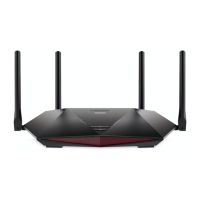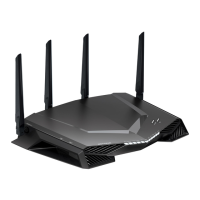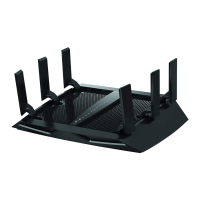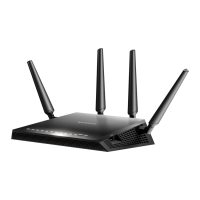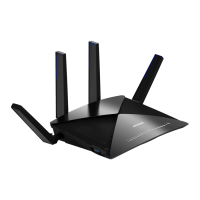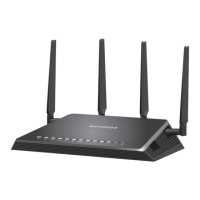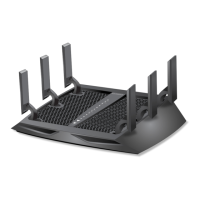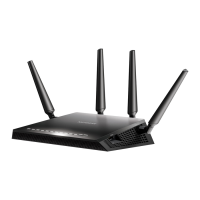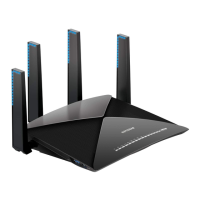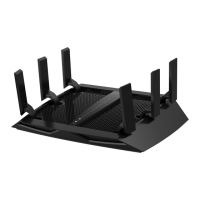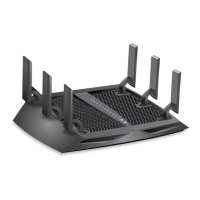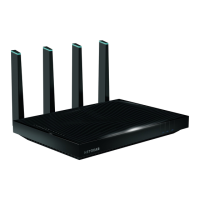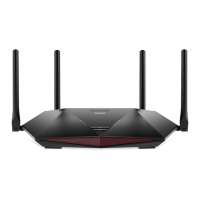
Do you have a question about the NETGEAR Nighthawk Pro XR1000 and is the answer not in the manual?
| WiFi Technology | WiFi 6 (802.11ax) |
|---|---|
| Processor | 1.5GHz triple-core processor |
| Antenna | 4 external antennas |
| USB Ports | 1 x USB 3.0 port |
| RAM | 512MB |
| Flash Memory | 256MB |
| MU-MIMO | Yes |
| QoS | Dynamic QoS |
| WiFi Speed | AX5400 (5.4 Gbps) |
| Ethernet Ports | 4 LAN @ 1G Mbps |
| Frequency Band | Dual-Band (2.4GHz + 5GHz) |
| Security | WPA3, VPN support |
Guide on using a web browser to access the router's interface for viewing or changing settings.
Steps to log in to the router's web interface using a browser with admin credentials.
Guide to using the Setup Wizard for automatic router configuration and Internet detection.
Steps for manually specifying Internet connection settings, including without a login.
Procedure to set up an Internet connection that requires a login name and password from your ISP.
How to use the Geo Filter to limit distance to game servers for improved response time and fairer games.
Guide to running Speed, Ping, and Ping (Under Load) tests to determine Internet speeds.
How to allocate download and upload bandwidth to specific devices on the network.
Setting up rules to prioritize traffic for specific devices and services to reduce network lag.
How to ping game servers, track connection quality, and build ping history for servers.
How to view connected devices, change displayed settings, and block devices from the network.
Details on viewing real-time bandwidth consumption by devices, traffic categories, and applications.
Overview of NETGEAR Armor's protection against cyber threats and how to activate and manage it.
Setting up rules to allow, block, or reject traffic by category, game, or port range.
Using outbound firewall rules to prevent specific services and applications from accessing the Internet.
Configuring WiFi network name (SSID), password, security options, and region for 2.4/5 GHz bands.
Modifying the WiFi password and security settings, recommending WPA2/WPA3 Personal (AES).
Checking for and installing new router firmware to keep the device up-to-date with features and security.
Procedure to change the router's administrative password for enhanced security.
Resetting the router to its original factory settings using the Reset button or web interface.
Using the traffic meter to monitor Internet traffic volume, set limits, and get live usage updates.
Creating a Dynamic DNS account and configuring the router to use a domain name for remote access.
Configuring a personal FTP server using a customized URL via Dynamic DNS for remote network access.
Establishing a secure virtual private network (VPN) connection to your router when away from home.
Configuring router settings to enable and specify VPN service type, port, and protocol.
Instructions for installing OpenVPN client software on various operating systems for VPN access.
Steps to open a VPN tunnel from a Windows computer to the router for secure network access.
Using a VPN connection to access your home Internet service when away from home.
Allowing specific incoming traffic to reach a server on your local network via port forwarding.
Configuring port triggering for dynamic opening of incoming ports based on outgoing traffic.
Steps to troubleshoot issues preventing login to the router's web interface.
Diagnosing problems when you can access the router but not the Internet.
Resolving problems with loading web pages, DNS server issues, and default gateway configuration.
